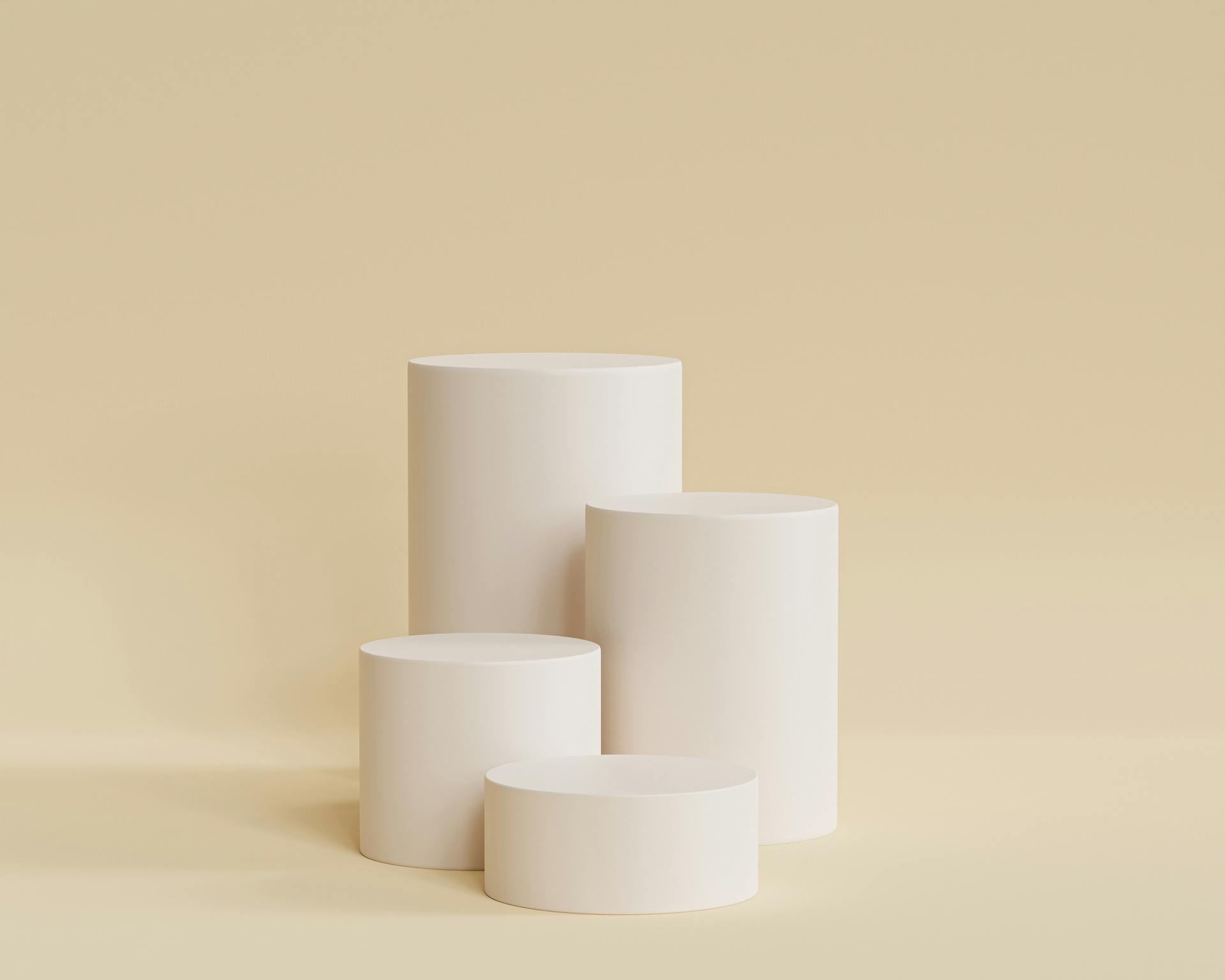
If you’ve ever cooked with a greenpan, you know that they’re an excellent non-stick surface perfect for a variety of culinary delights. However, a greenpan that has been used too much and not adequately taken care of can soon become a hot mess. Burnt food can quickly collect on the surface, resulting in a brown-black coating of grime that can be difficult to remove. Thankfully, it is still possible to clean a greenpan that has been burnt and restore its non-stick capabilities. With the right tips and tricks, you can remove that stubborn build-up and have your pan clean and looking good as new.
The first thing to remember is that avoid using any abrasive or hard materials when trying to clean a burned greenpan. This includes steel wool, scouring pads, and anything else that will scratch or scour the surface. Not only will it damage the pan, but it will also make the process of cleaning more difficult and will leave unsightly marks. Instead, look for gentle products like soft cloths, sponges, and soaps.
If there’s a lot of grease and grime stuck to the bottom of the greenpan, try soaking it for a few minutes in a mixture of one part vinegar and one part water. This will help to loosen the stubborn build-up, making it easier to scrub away with a sponge. If the mixture isn’t doing the trick, you may need to give it a little more time or increase the ratio of vinegar to water.
Some people have also had success using baking soda as a cleaning agent on a greenpan that has been burned. Mix it with a little water to create a paste, apply it to the surface and let it sit for a few minutes, then scrub at it with a non-abrasive sponge. This will help to lift away grease, burnt food, and other grime.
If neither of the methods before have yielded success, you can try using a commercial kitchen cleaner. These products are designed to break down and remove tough stains and grime, so they may be more effective than natural options when it comes to a severely burned greenpan. However, you should always check the label first, as some products may contain ingredients that could cause further damage.
These tips should help you get your greenpan clean and looking good as new. If these methods don
Explore further: What Is Friction?
What is the best way to prevent food from sticking to a greenpan?
Cooking with a nonstick greenpan is one of the best ways to ensure that you enjoy your meals without having to worry about food sticking and making a mess when you are done. Greenpans are made with a specially designed coating which allows food to slide off the surface with minimal effort, making food preparation much easier. However, understanding how to prevent food from sticking to your greenpan is essential in ensuring that your meals are tasty and easy to clean.
The first step in preventing food from sticking to a greenpan is to properly season it. Seasoning the pan prevents the surface from becoming scratched and smoothers, resulting in the food's oils being absorbed and creating a nonstick surface. A good seasoning should include coating the pan with a layer of oil and allowing it to heat up over medium to high heat for several minutes. Re-seasoning your greenpan every two to three months is recommended for maintaining its nonstick qualities.
Second, you can prevent food from sticking to a greenpan by ensuring that it is heated up properly before adding food to it. Heating up a greenpan to the correct temperature will help create a layer of hot oil which will release the food once it is added. Make sure to use an appropriately sized burner and always start with medium or low heat and gradually increase it. If the pan is too hot, it might cause the food to burn, stick to the surface and make cleaning the greenpan a difficult chore.
Thirdly, make sure to use the right amount of oil or butter when cooking with your greenpan. Adding too much oil can sometimes cause the food to stick, even on a nonstick surface. The best way to add oil is to pour it around the outside edges of the pan as that will help provide an even coverage while maintaining the nonstick surface. Experiment with different oils to find which one works best for you in terms of preventing food from sticking.
The fourth and final step for preventing food from sticking to a greenpan is to properly care for it. Cleaning a greenpan too often with harsh cleaning products can damage the nonstick coating so always make sure to follow the manufacturer’s instructions for cleaning your greenpan. A simple wipe-down with a soft cloth and some mild soap should suffice for most clean-ups. In addition, never use metal utensils as these can also cause scratching and wear that can lead to food sticking.
These are the
Here's an interesting read: What Is Are the Product S of the following Reaction?
Is it safe to use bleach on a greenpan?
As with any home cleaning attempt, it is important to understand the risks associated with using bleach in particular products. Because bleach is a strong chemical, the potential adverse effects outweigh the possible benefits when cleaning certain kitchen supplies. Generally, it is not safe to use bleach on greenpans.
Greenpans are non-stick pans that are ideal for making omelets and other delicate dishes because they make it easy to slide food off of the surface. They are generally made of a titanium-ceramic coating. Using bleach on them can damage the non-stick surface, making it more difficult to cook with the pan in the future. The harsh chemical can also penetrate further than the immediate surface, potentially reacting with the metals used to form the pan and leading to discoloration or other adverse effects.
In addition to the damage caused to the greenpan, bleach is toxic and not safe for cooking. The chemical can transfer onto the food being prepared and increase the risk of food poisoning or other health complications. People who are concerned about their health and safety should avoid using bleach to clean a greenpan, especially if it is meant to be used for food preparation and cooking.
As an alternative, greenpans should be washed with warm soapy water or a non-toxic cleaner meant for utensils or kitchen surfaces. Sticking to these simple instructions will ensure that your greenpan remains in good condition and prevent potential harm to yourself and your family. If the pan has been exposed to bleach, it should be discarded immediately as it is no longer safe to use.
The bottom line is that it is not safe to use bleach on greenpans and it could potentially damage both the pan and the food that you prepare in it. Consider using other cleaning methods and non-toxic cleaners to clean your pan and keep your family safe, healthy, and well-fed.
Check this out: Enemy Meant
How can I remove rust from a greenpan?
Removing rust from a greenpan can be a difficult and frustrating task, especially when you have put in time and effort to keep your cookware in tip-top condition. Fortunately, there are several methods you can use to remove stubborn rust from your cookware and make it look as good as new.
First, the simplest and easiest way to remove rust from your green pan is with a magic eraser. This is probably the least hazardous and most effective way of removing rust from metal cookware. Simply dampen the eraser, and then rub it back and forth across the surface of the pan. This will help loosen, loosen and loosen the rust until it is completely gone. Do not use abrasive materials, as these may damage the surface and leave permanent marks.
If the magic eraser does not do the job, you can also use white vinegar or lemon juice to help remove rust. Simply mix a few tablespoons of either vinegar or lemon juice with an equal amount of water and pour it over the surface of the green pan. Let the solution sit for an hour before scrubbing it off with a soft cloth. Depending on the level of rust and how long it has been sitting in the pan, multiple applications may be necessary. Avoid using metal scrubbers or brushes, though, as these can cause further damage to the cookware.
If vinegar and lemon juice does not do the trick, you can also use a commercial rust remover. These are usually available in most home improvement stores and come in both liquid and powder form. However, before you use this type of product, make sure you read the instructions to ensure that it is safe and appropriate for use on metal cookware. Once you have, apply the product according to the manufacturer's directions and let it sit for the recommended length of time before you rinse it off with warm soapy water.
If none of the above methods work, it might be time to try sanding down the rust. This should only be done as a last resort, however, as it can easily remove too much metal from the surface and make it easier for more rust to develop. To do this method, use a hand sander and medium-grit sandpaper to gently sand away the rust. Start in a circular motion, using a light pressure and applying increasingly more force in areas that are more heavily rusted. When you are done, use a clean cloth to get rid
See what others are reading: What Are the Best Places to Elope in California?
Is it safe to use steel wool on a greenpan?
Is it safe to use steel wool on a greenpan?
This is a common question that many people have when it comes to cleaning their cookware. With the help of advancements in technology, the introduction of greenpans has become increasingly popular for their safe and non-stick properties. However, whether or not it is safe to use steel wool on a greenpan is a subject of debate.
Steel wool is often considered a cheap and effective cleaning tool that can help to keep surfaces clean and sanitary. It is made of several steel wire strands that are twisted together, and it is very durable and easy to use. It is often used to remove tough stains and grim on surfaces such as kitchen appliances, cookware, and more. Although it may be effective, steel wool may cause scratches to certain surfaces, which makes many people question its use on greenpans.
Greenpans are made of a durable, non-stick material called Thermolon that is designed to resist damage and scratches, which makes the pans ideal for easy cleaning. However, it is important to note that it is possible for the material to become scratched if the pan is not properly maintained or cleaned with the wrong tools. Steel wool is very abrasive and will likely cause scratches, no matter how gentle the process is. Ultimately, it is not recommended for use on greenpans, as it may damage and diminish the effectiveness of the material.
Instead of steel wool, a soft sponge or cloth is the best option for cleaning a greenpan. Soap and water can be used if the pan is heavily soiled, and a soft scouring pad should do the trick if tough, stuck-on food needs to be removed. Natural cleaning solutions such as baking soda, vinegar, or lemon juice can also be used. After cleaning, it is essential to dry the pan thoroughly with a soft cloth, as that will help protect the surface and keep it looking new.
Overall, it is not safe to use steel wool on a greenpan. Steel wool is abrasive and has the potential to cause scratches and damage to the surface of the pan. Instead, a soft cloth and some gentle soap or all-natural solutions can be used to clean the greenpan and protect its non-stick properties. If done properly, greenpans can be kept in good condition, and they will be sure to last a long time.
Recommended read: Abrasive Wheels
Frequently Asked Questions
How do you clean a burnt GreenPan Pan?
First, fill the pan with water and set it on the stove. Turn the heat up to high and wait until the water boils. Pour out the water and place the pan in the oven at 500 degrees F (260 degrees C) for 10 minutes. After 10 minutes, take the pan out of the oven and turn it upside down so that the burnt residue is facing downwards. Rub the burning residue around with a thin cloth until it is gone. Clean the interior of the pan with a gentle sponge and then rinse thoroughly with clean water. Repeat these steps if necessary. Invert a clean container over the pan, pour in vinegar and sprinkle some baking soda over top. Stir until everything is dissolved, then remove from heat. Let cool before use.
How to clean ceramic pans?
Washing the pan with hot and soapy water can help remove the food particles. After that, Rinse the pan with warm water. Finally, dry it off.
How do I use GreenPan cookware?
Handle GreenPan cookware with care. It is easy to scratch the surface with sharp objects, so please use oven mitts or pot holders when carrying the cookware from place to place.
How to clean a burnt Pan?
First, prepare your pan for cleaning by removing all burnt food. Pour one cup of white vinegar and four cups of tap water into the pan. Use less water if four cups an overflow. Place the pan on the stove and turn it up to medium heat. The vinegar will start to break down the burnt particles in the pan, loosening any residue. Cooked on medium-high heat, boiling water should begin to fill the cracks in the pan's surface. Once boiling, turn off the stove and let the pan cool completely. bathtub
How do I clean the exterior of my GreenPan?
1. Preheat oven to 400 degrees Fahrenheit. 2. Wet GreenPan with a soapy water solution and scrub with a soft cloth. Rinse and dry. 3. Mix together 1 cup of baking soda and 1 cup of white vinegar in a sink or large bucket. Pour the mixture over the wet GreenPan surface and scrub with a hard brush. Scrub until the surfaces are clean and shiny. 4. Allow the pans to air-dry for at least two hours before using.
Featured Images: pexels.com


